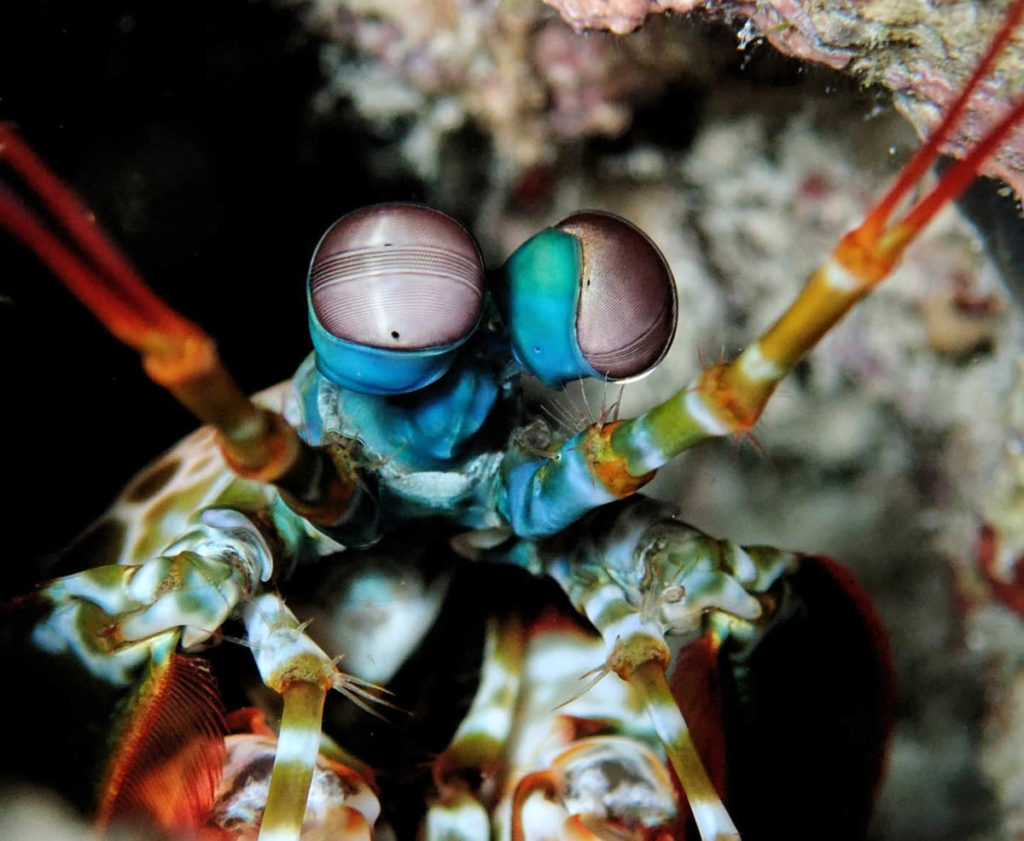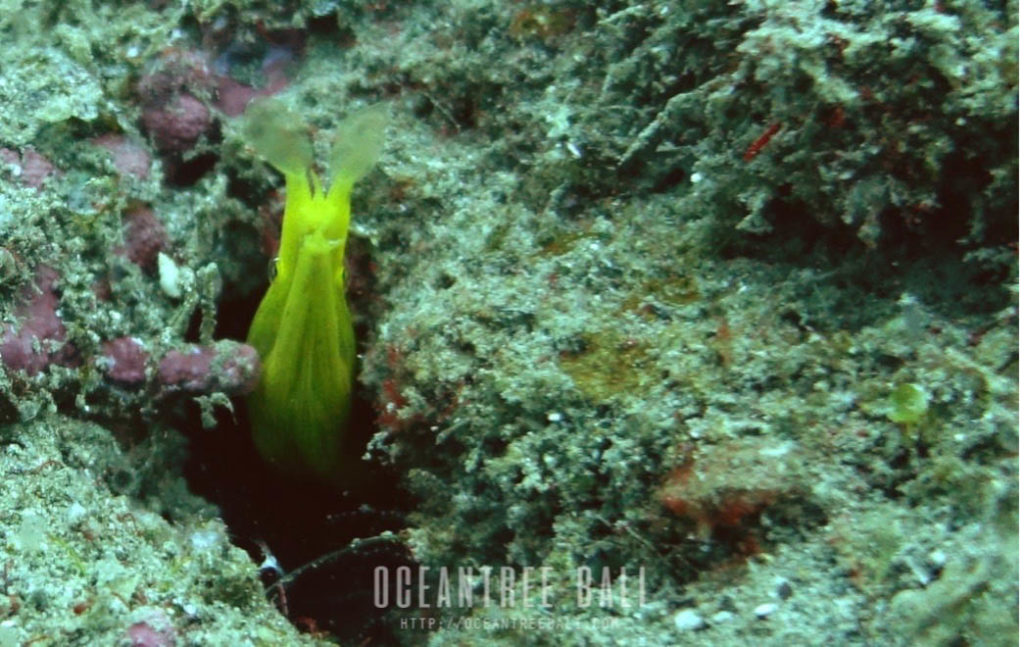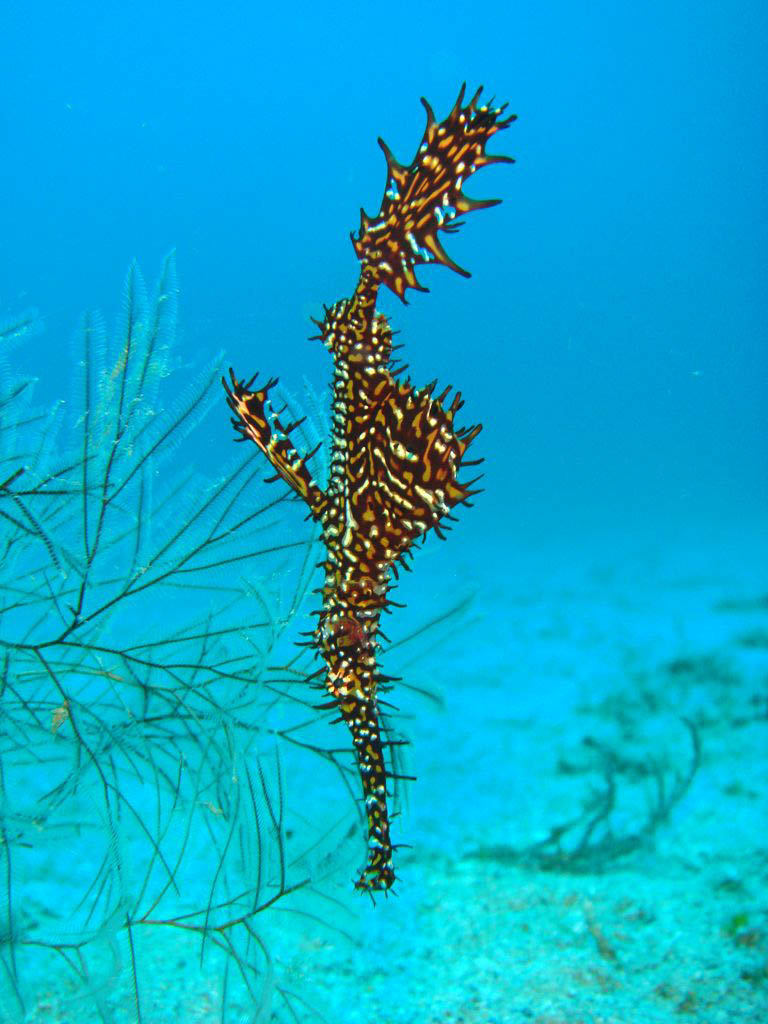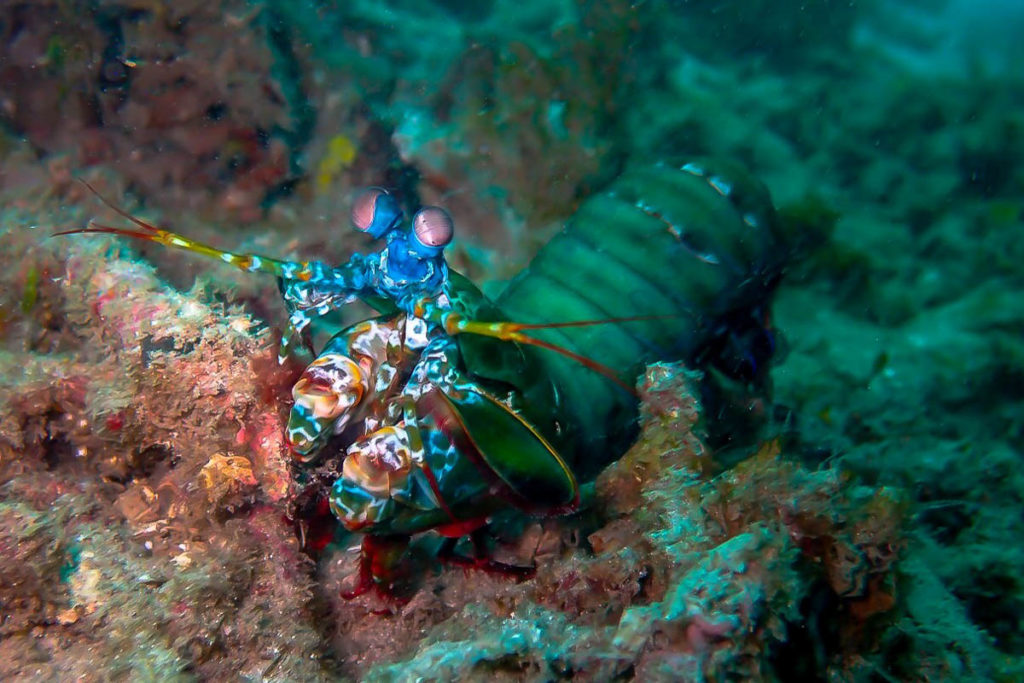There are many reasons why Bali is a popular diving destination. Not only do you get to enjoy the beautiful hot climate, crystalline blue seas, friendly hospitality – but you also have the chance to see some unique wildlife. If you are heading over for a dive in Bali make sure to keep an eye out for some of these weird and wonderful creatures.
Nudibranch
When people think about ocean life they tend to overlook smaller creatures in favour of sharks, whales, etc, yet there is a vast variety of nudibranch (sea slugs) beneath the waves. With over 2000 known species, these little creatures are spectacularly diverse in shape, size and colour. They are named for their external breathing apparatus as nudibranch means “naked gill”.
Pictured is a species of sheep nudibranch, named for its striking resemblance to sheep (if you ignore the colour of course). Unlike the typical sheep, the “ears” of this nudi function as taste and scent receptors. However they do exhibit a similar grazing behaviour to the farm animals as they will roam around munching on sea algae.
Frogfish
The frogfish, as indicated by its name, is a species of anglerfish that bears resemblance to frogs. Using their pectoral fins like legs, they “crawl” along the sea floor and camouflage themselves in their surroundings. These fish attract prey using a specialised appendage that acts as a bait mimicking food such as a worm. With one of the fastest strike speeds on Earth, the frogfish will rapidly gulp up any victims it has lured.
Sadly due to coral bleaching, these creatures have been found camouflaging themselves to match the pale white corals around them.
Mandarin fish
Considerably one of the most beautiful fish you can find in the ocean, the mandarin fish is one of two known species of fish that can produce cyanophores (blue pigmented cells). This is a small species of dragonet that requires caution due to its many tiny spines used to inject toxic mucus into any threat that touches it. If this wasn’t enough to keep predators away, the fish is also covered in a layer of foul-smelling mucus. The mandarin fish requires these adaptations because it lacks the protective scales that most other fish possess. The Mandarin is a special treat on a night dive in Jemeluk Bay under the guidance of Kadek or Ketut from Ocean Tree Bali.
Ribbon eels
The ribbon eel is a species of moray eel (often called leaf-nosed moray) and their name comes from the manner in which they swim – it looks a lot like a ribbon being waved. These eels are often a different colour depending on their age and sex: juveniles are black, males are blue and females are yellow. They have long protruding nostrils that they use to sense vibrations in the water to avoid danger and locate prey. Despite its aggressive appearance when opening its mouth to divers, the ribbon eel is a fairly shy and gentle creature, it only does this in order to breathe.
Leaf scorpionfish
The leaf scorpionfish is shaped like a leaf and found in a variety of colours: green, brown, red, pink, yellow and white. It uses spines along its back to inject venom into predators who attempt to eat the fish. These fish are not very competent swimmers and instead choose to hop around on their fins to travel in search of food. Roughly every 10-14 days the leaf scorpionfish will shed its skin, this allows them to change colour. To aid in camouflage they often leave small pieces of their dead skin behind. In the wild these creatures like to wedge themselves in crevices using their pelvic fins and sway rhythmically with the current.
Blue ringed octopus
The blue ringed octopus is a highly venomous species of octopus found in coral reefs and tide pools. Its characteristic iridescent blue rings are only displayed when the octopus feels threatened. These creatures have bacteria in their salivary glands which produce a powerful neurotoxin called tetrodotoxin. The octopus administers this venom by biting its prey thus rendering it paralysed, so despite it not being inherently aggressive, please do not touch these animals. Its bite is painless and you will not notice until it is too late.
The octopus will propel itself around by expelling water through its siphon as opposed to swimming. Only the young juveniles have the ability to produce and expel ink, they lose this ability once they mature.
Ornate ghost pipe fish
The ornate ghost pipe fish (also known as the harlequin pipe fish) is a false pipefish found in the Pacific and Indian oceans. Its name “Solenostomus paradoxus” comes from the Greek “paradoxos” describing the extraordinary appearance and features of this fish. One of which is that it swims upside down. The body of this creature is covered in protective bony plates allowing it to camouflage into the weeds and corals in which it hides. These small fish can be extremely difficult to find as they motionlessly blend in with feather stars so finding them can feel like a rare treat.
Mantis shrimp
Despite its name, the mantis shrimp is neither a shrimp nor a mantis – it is a type of crustacean called a stomatopod. These animals are famous for their ability to punch. They are equipped with two club-shaped appendages that it uses to strike its prey. Their punches reach a speed of up to 50mph delivering up to 160 pounds of force on its victim. This allows them to crack open the shells of other animals at ease.
Their eyesight is unparalleled with their eyes containing 12 different photoreceptors (cells that allow them to detect different types of colour). To put that into perspective, human eyes have only 3. This has lead people to believe that mantis shrimp can see a whole world of colour that we are unable to.
Whether you are diving in Bali or looking at diving in the Gili’s, local knowledge is priceless. I am just starting out on my underwater photography adventure so when I am in Bali my go to place is Ocean Tree in Amed, east Bali. The guys there , Ketut and Kadek really know their stuff. Even if you just bring your GoPro or Paralenz these two pros will show you all the cool stuff. They are super patient and very helpful (lucky for me ). They know their underwater photography and have some very cool camera rigs.
If you are heading to the Gili’s , then you need to look up Manta Dive on Gili Trawangan. They have been around since 1999. Ben and the team are some of the most accommodating and professional people I have ever met. I recently did my SSI Stress and Rescue course with Manta. Their local knowledge and love of Macro is evident from the awesome photos that Ben has allowed me to use for this article.
With Bali starting to open up again for some international travel under certain conditions hopefully we can all get wet again and start taking some awesome underwater photos. I can’t wait to get back out to Bali and support the local businesses.










